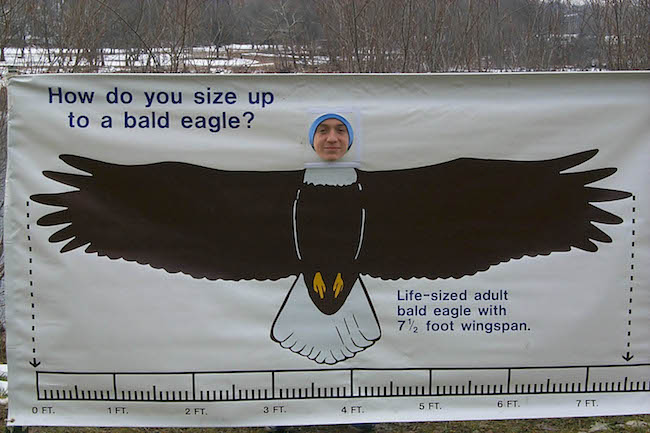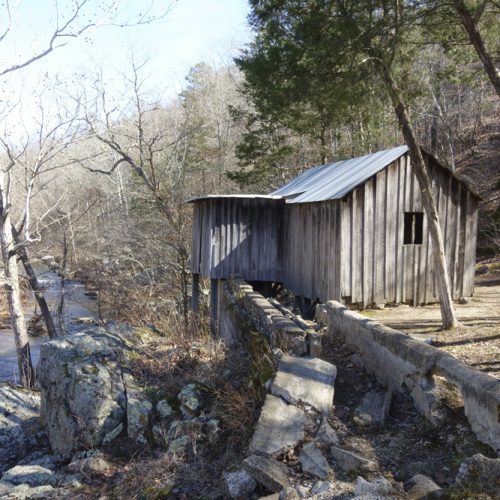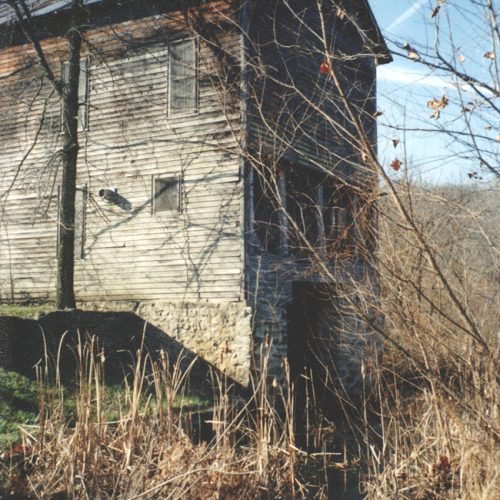Find where to go to see bald eagles in Missouri this winter.
The crowds moved quickly to the railings on one side of the paddlewheel boat called the “Tom Sawyer,” peering through binoculars at the shoreline, looking at a spot near the condominiums. They cried, “Oh, look, there he is,” and asked each other, “Can you see him?”
No, the crowd wasn’t looking at a celebrity. In fact, if you could have heard the people on the boat, you’d have soon figured that they weren’t looking at someone – but something. “He’s up there in that tree near the last condo on the left,” said someone.
“Oooh, he’s a big one,” said another person.
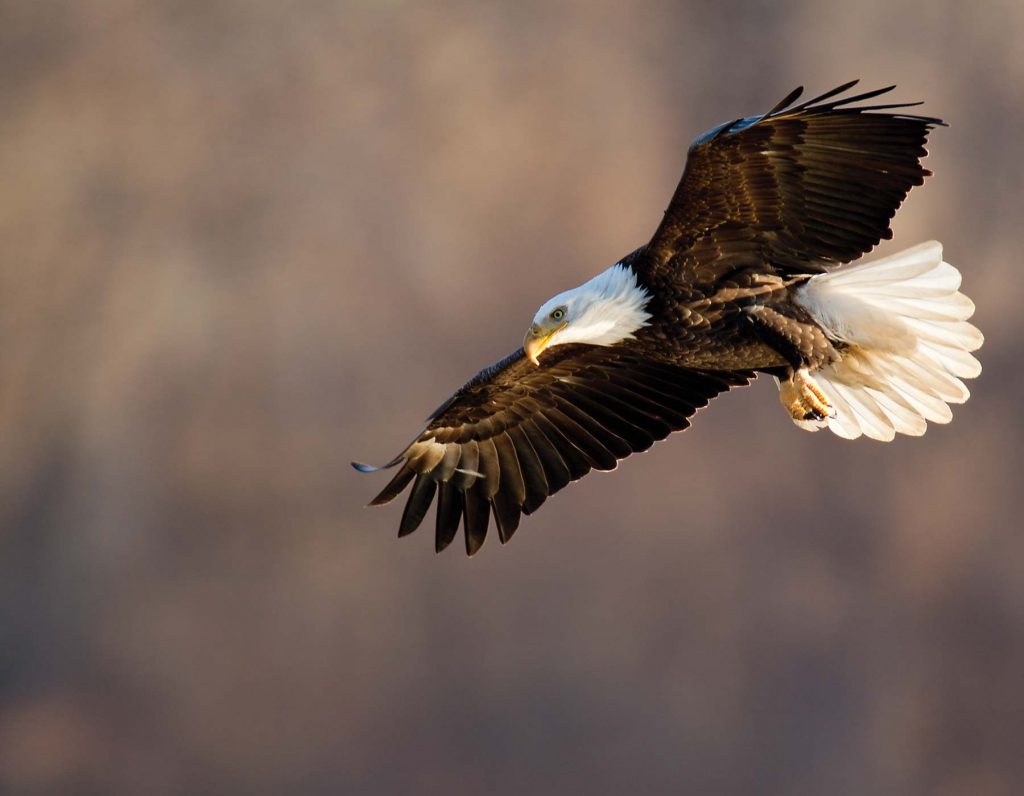
I took my binoculars and followed the tree line up, over near the last condo on the left. There he was, big as life – a bald eagle perched on a tree branch, overlooking the Lake of the Ozarks. When I had him in my line of sight, he flicked his head in my direction and seemed to look right at me.
Majestic, and even downright haughty-looking, eagles often make their winter homes on the Lake of the Ozarks. Hailing from Minnesota, Canada and the Great Lakes states, an estimated 2,200 eagles made their winter homes in Missouri, preferring to roost in the tree-lined shores surrounding the state’s many lakes, and even a swamp (Mingo).
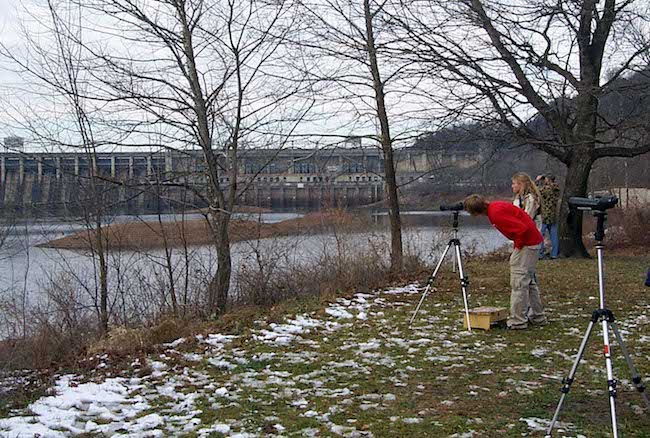 A volunteer for Missouri Department of Conservation (MDC) told me that last year there were at least 15 nests spotted at the Lake. Of the 45 or so nests counted every winter in Missouri, this is a significant portion of the eagle nests in the state.
A volunteer for Missouri Department of Conservation (MDC) told me that last year there were at least 15 nests spotted at the Lake. Of the 45 or so nests counted every winter in Missouri, this is a significant portion of the eagle nests in the state.
According to an MDC brochure, nesting eagles stayed in Missouri as early as the 1800s. By 1965 there were no nestings, but since the federal government declared the bald eagle an endangered species in 43 states in 1978, the eagle population blossomed. It’s estimated that now there are more than 10,000 nesting pairs in the lower 48 states.
Supposedly, the eagles choose to winter in Missouri for 2 reasons: the flyway takes them right by our Mecca of roosting places, and generally, our lakes do not freeze over. Birds that land in northern Missouri might choose to move south to the Gulf of Mexico during a hard winter. Many birds come back to their same locations, year after year – which might amount to several years, since the lifespan of an eagle in the wild is about 30 years.
Eagle Days
The MDC holds Eagle Days throughout the state during the months of January and February. The day my family and I were at the Lake happened to also be Eagle Day at Willmore Lodge on the Lake’s northern shore near Bagnell Dam. Over at the Lodge, the MDC placed eagle displays, and employees of the Wild Bird Sanctuary in St. Louis gave presentations on eagles and brought 3 eagles to display.
If you should decide to head over to the Lake area to see eagles, you should go to the MDC access located below the Dam (off of Highway 54 East). Just park at the put-in point, and get out your spotting scope or binoculars and search the tree line.
The eagles usually leave Missouri at the end of February, having arrived in December. Other places that you can visit to look for birds include Eagle Bluffs Conservation Area, Table Rock Lake, and the Mingo National Wildlife Refuge.
For more information about the bald eagle in Missouri, check the MDC’s website.
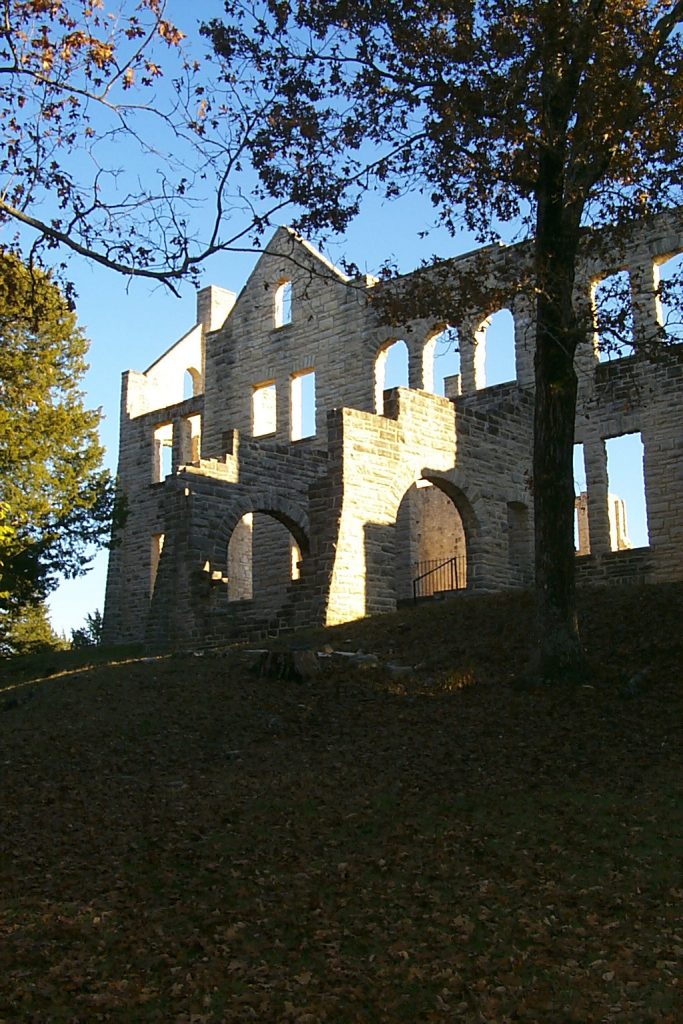
If you happen to go to the Lake of the Ozarks to spot eagles, you couldt to meander on down to Ha Ha Tonka State Park before going home. It’s lovely this time of year, and the view from the top is magnificent. In fact, you might say you have an “eagles’-eye” view of the world from there.
First published December 2, 2003. Website reference updated on Dec. 24, 2017.

